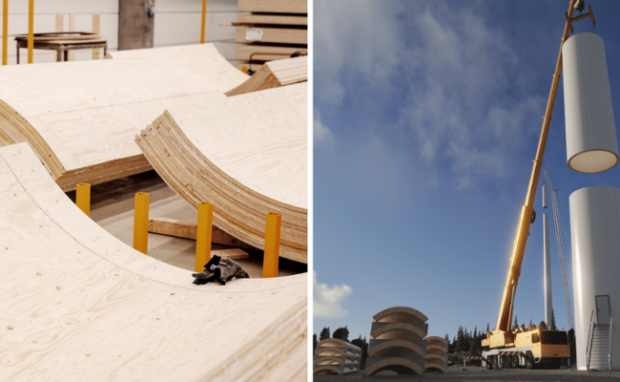World’s tallest wooden wind turbine in Sweden
Sweden recently completed the installation of the world’s largest wind turbine. Surprisingly, its creators built it using wood instead of steel, like most wind turbines. They argued wood was more abundant and cost-efficient than steel, enabling them to build the tallest wind energy blades and generators worldwide.
We’ve had renewable energy sources for years but needed innovations to make them significantly more reliable and practical. However, we need more to reduce carbon emissions while producing enough power for the world. Using unconventional materials like wood might be the next improvement wind energy and other sources need.
This article will discuss how Swedish experts constructed the world’s tallest wooden wind turbine. Later, I will share another way wood is improving sustainable energy.
Why make a wooden wood turbine?

BBC reports that Swedish startup Modvion built the wooden structure. It says the company has been building wind turbines with steel. However, they chose wood for the tallest because of wood’s advantage over metal.
A turbine can generate more energy by catching stronger winds, and it can do so by reaching higher altitudes. Consequently, it needs a taller, thicker tower to support the blades.
That means construction will require more steel, meaning higher costs. Moreover, it can become complicated to transport parts to the construction site because they must traverse complex roads, tunnels, and roundabouts.
On the other hand, Modvion CEO Otto Lundman and co-founder David Olivegren told BBC that wood’s “big selling point” is they can transport wooden components in more easily transported modules.
Steel requires fitting screws and bolts and welding pieces together. In contrast, they assembled the wooden wind turbine’s parts using glue. “Wood and glue is the perfect combination, we’ve known that for hundreds of years,” Olivegren says.
“And because using wood is lighter [than steel], you can build taller turbines with less material,” he added. Modvion says the parts consist of 3mm-thick spruce wood layers.
“It’s our secret recipe,” says the company co-founder. They take the pieces on site, glue them together into cylinders, and then stack them on top of each other.
You may also like: Tidal turbine turns ocean waves into energy
They also glue steel fittings into place to support the structure. Moreover, Modvion said using wood reduces the turbines’ carbon footprint.
Steel uses extremely hot furnaces that often burn fossil fuels. Consequently, they emit carbon dioxide that exacerbates climate change. The company says using wood eliminates their carbon footprint.
Spruce trees capture carbon dioxide that remains in their wood once cut down. Modvion argues it doesn’t release carbon if it doesn’t rot or burn.
Other wooden energy sources

Royal Institute of Technology (KTH) and Linköping University researchers also used wood to transform a green energy source. They used lignin from wood pulp to create organic solar cells.
Lignin forms robust hydrogen bonds with traditional cathode interface layer (CIL) materials like bathocuproine (BCP). They are the substances that make up the part that turns sunlight into electricity.
It improves the stability and eco-friendliness of the panels while enabling energy transfer. The combination of BCP and KL creates a binary interface layer that can surpass the stability and efficiency of traditional CiLs.
Electrons must pass between a solar cell’s organic materials and the cathode interface. Lignin can form those bonds, enabling energy transfer across a solar cell. Scientists made that possible by dissolving KL and BCP in a solvent to form a homogenous solution.
Then, they applied that to the cathode side of their solar cells. Consequently, the solution is between the active layer that absorbs light and the cathode.
That enables the binary CIL to effectively facilitate electron transport while preventing the active layer from degrading. As a result, the lignin improves the organic solar panel’s performance and longevity.
You may also like: Japan will launch wooden space satellites
“We have created a material, or composite, of kraft lignin that will be the contact surface with the cathode layer,” explained Qilun Zhang, one of the study’s authors.
“It turned out that the solar cell became much more stable. The advantage of kraft lignin is that it has the ability to create many hydrogen bonds, which helps to stabilize the solar cell.”
Organic solar cells may not match the efficiency of their silicon counterparts. However, their non-toxicity, sustainability, and affordability make them highly suitable for various applications.
Conclusion
Sweden recently announced the creation of the world’s largest wooden wind turbine. Startup Modvion said wood allowed them to build such a tall structure.
Wood is more abundant than steel, enabling them to get more materials to build a higher turbine. Also, the company said it is easier to build with wood, which typically only needs glue.
Alternative energy sources have been transforming significantly. Learn more about these trends and more digital tips at Inquirer Tech.